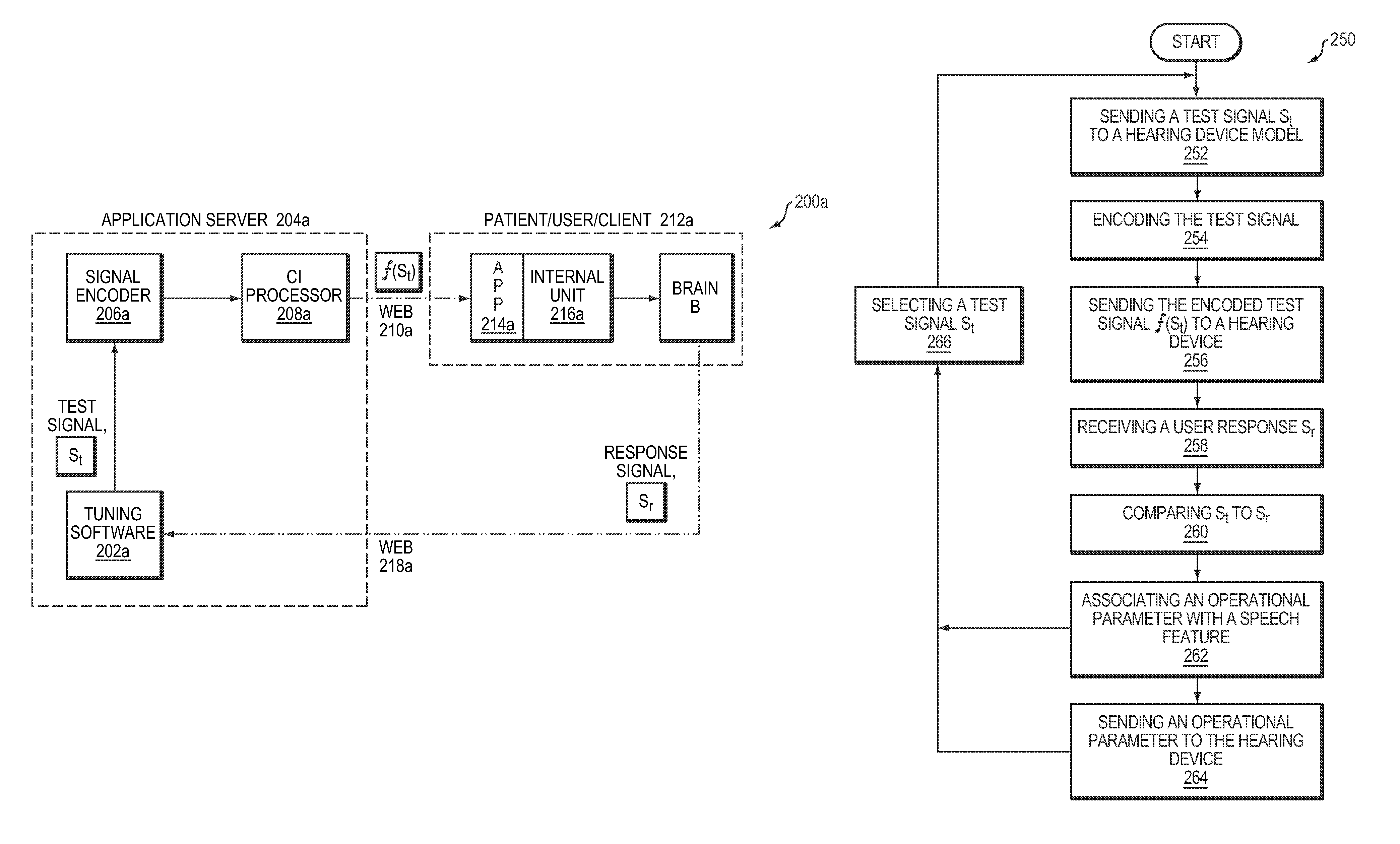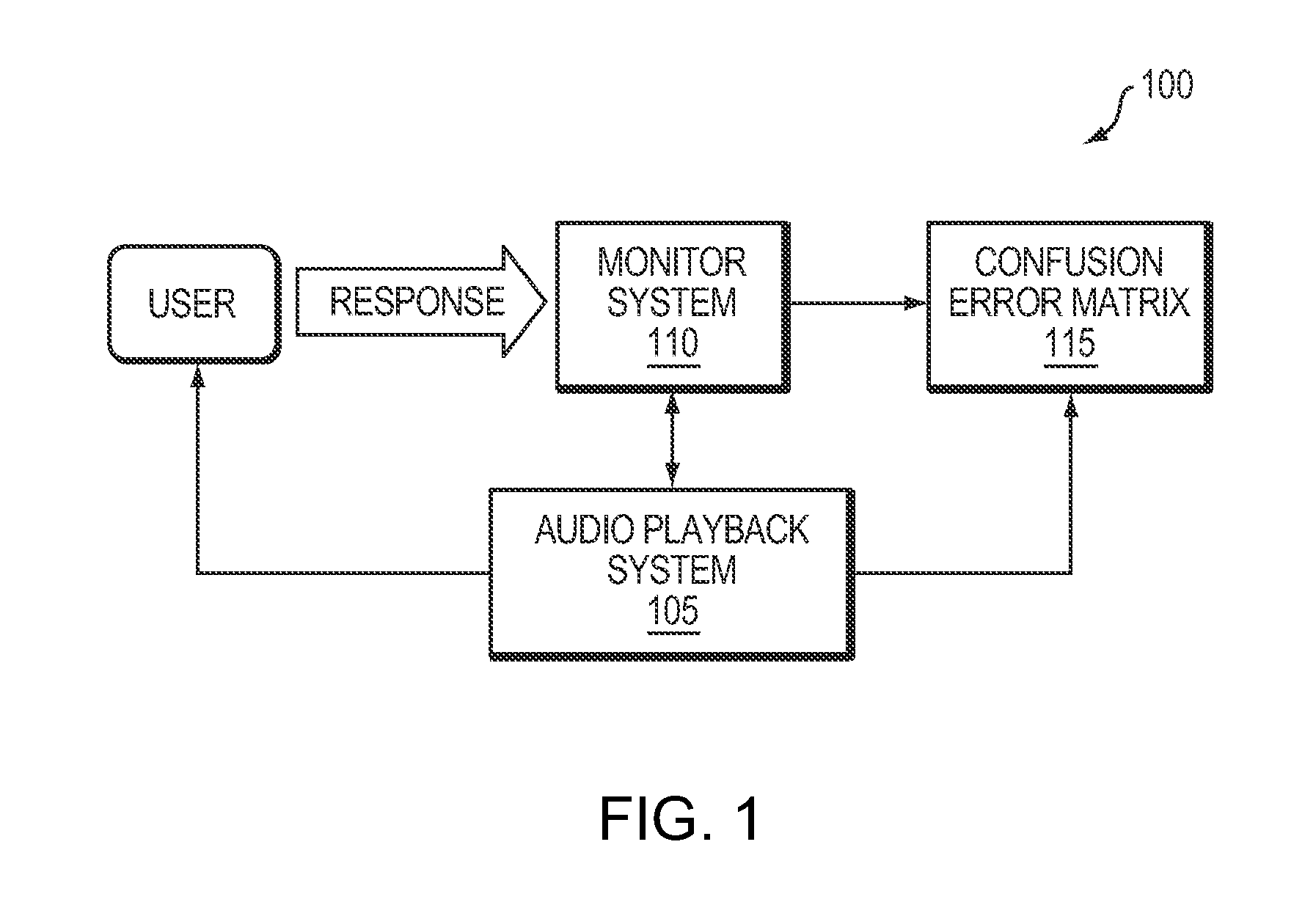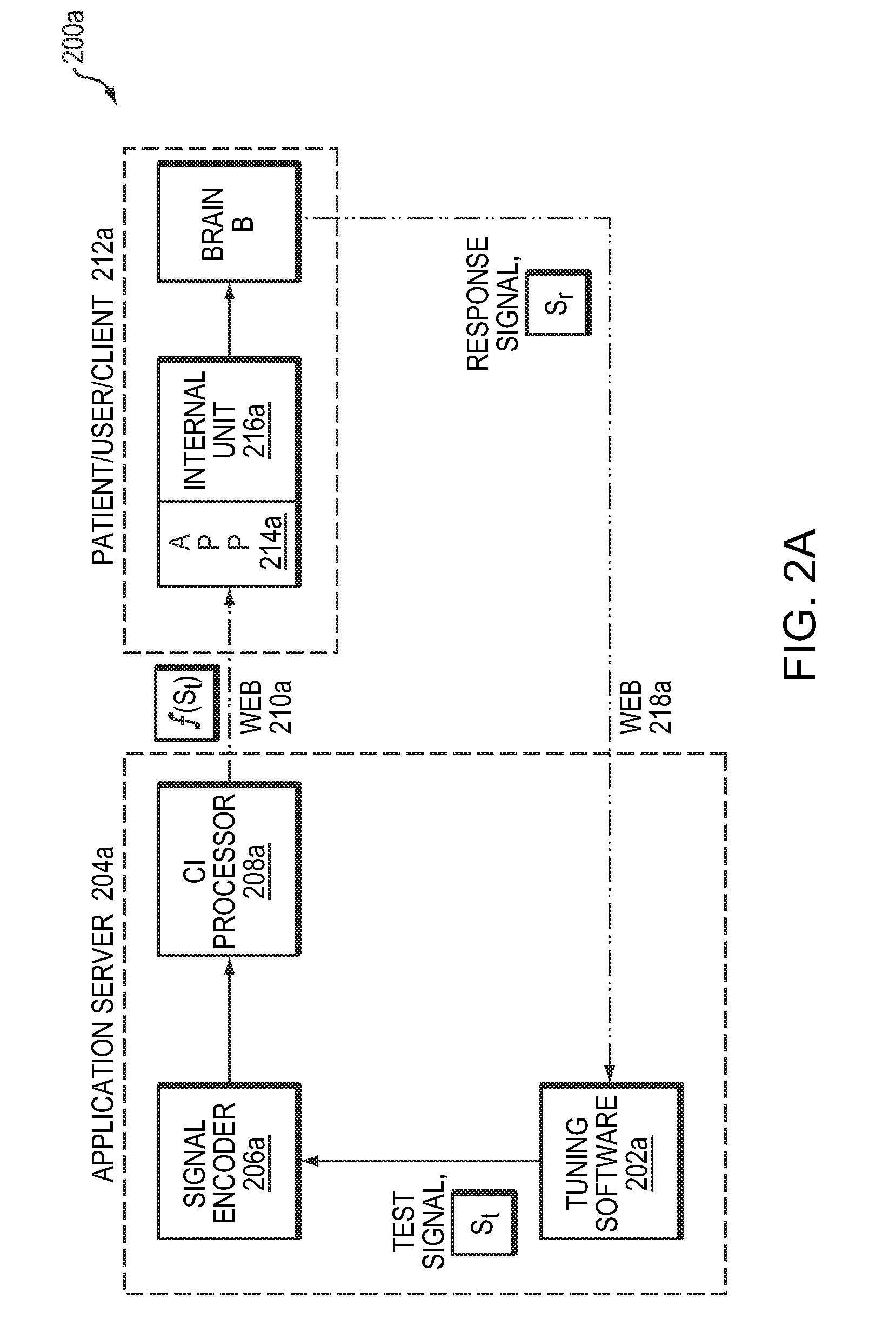Systems and methods for remotely tuning hearing devices
a technology of perceptual devices and tuning systems, applied in the direction of deaf aid adaptation, artificial respiration, therapy, etc., can solve the problems of daunting tasks, time and number, and the tuning process is not user-specific,
- Summary
- Abstract
- Description
- Claims
- Application Information
AI Technical Summary
Benefits of technology
Problems solved by technology
Method used
Image
Examples
Embodiment Construction
[0041]FIG. 1 is a schematic diagram illustrating an exemplary system 100 for determining relationships between distinctive speech and / or language features and adjustable parameters of a hearing enhancement system (hearing device) in accordance with the inventive arrangements disclosed herein. As previously noted, such hearing devices can include any of a variety of digital hearing enhancement systems such as cochlear implant systems, digital hearing aids, or any other such device having digital processing and / or speech processing capabilities. Other hearing devices, in accordance with the invention, can include voice-based communication systems such as mobile phones configured to communicate via a cellular communications network and / or wireless ad hoc network, as well as telephones configured to communication via a Voice-over-Internet-Protocol (VoIP) network and / or adapted to communicate via a plain old telephone service (POTS) network. Additionally, speakers or headphones are also ...
PUM
 Login to View More
Login to View More Abstract
Description
Claims
Application Information
 Login to View More
Login to View More - R&D
- Intellectual Property
- Life Sciences
- Materials
- Tech Scout
- Unparalleled Data Quality
- Higher Quality Content
- 60% Fewer Hallucinations
Browse by: Latest US Patents, China's latest patents, Technical Efficacy Thesaurus, Application Domain, Technology Topic, Popular Technical Reports.
© 2025 PatSnap. All rights reserved.Legal|Privacy policy|Modern Slavery Act Transparency Statement|Sitemap|About US| Contact US: help@patsnap.com



